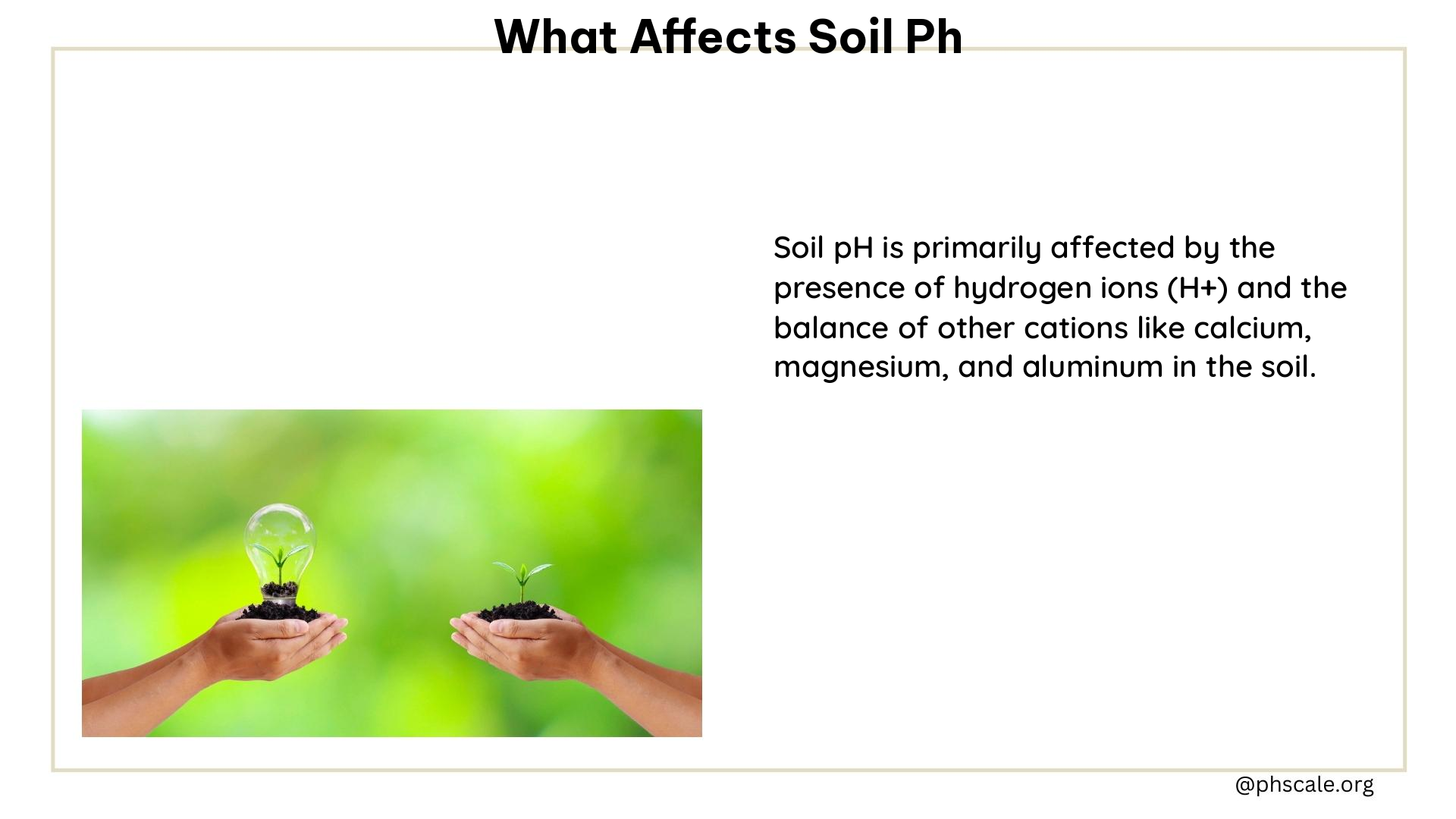Soil pH is a crucial factor that determines the overall health and productivity of the soil. It is a measure of the acidity or alkalinity of the soil, and it plays a significant role in the availability of essential nutrients for plant growth. Understanding the factors that affect soil pH is crucial for maintaining a balanced and thriving soil ecosystem. In this comprehensive blog post, we will explore the various factors that can influence soil pH and how they impact the soil’s properties.
Rainfall and Leaching
One of the primary factors that affect soil pH is rainfall and leaching. High rainfall can lead to soil acidification by leaching basic cations, such as calcium, magnesium, and potassium, from the soil. As these essential nutrients are removed, they are replaced by hydrogen ions, increasing the soil’s acidity. This process is particularly prevalent in humid climates, where the high precipitation levels can accelerate the leaching of these basic cations.
Parent Material

The pH of newly formed soils is largely determined by the minerals present in the parent material, which is the underlying rock or sediment from which the soil is derived. Different types of parent material can result in either acidic or alkaline soils. For example, soils formed from granite or sandstone tend to be more acidic, while those derived from limestone or shale are typically more alkaline.
Organic Matter Decay
The decomposition of organic matter, such as plant and animal residues, can also contribute to soil acidity. As organic matter breaks down, it releases hydrogen ions, which can lower the soil’s pH. This process is particularly important in forested or heavily vegetated areas, where the continuous addition of organic matter can gradually acidify the soil over time.
Nitrogen Fertilizers
The use of nitrogen fertilizers, especially those containing ammonium, can increase soil acidity. As ammonium is converted to nitrate in the soil, hydrogen ions are released, contributing to the acidification of the soil. This is a common issue in agricultural areas where heavy fertilizer application is practiced.
Plant Growth
Certain plants, such as legumes, can also contribute to soil acidity through their root activities. These plants release hydrogen ions from their roots to maintain electrochemical balance within their tissues, which can lower the soil’s pH over time.
Climate
The climate of a region can significantly influence soil pH. Soils in humid climates tend to be more acidic, as the high rainfall and leaching processes described earlier can lead to the loss of basic cations. In contrast, soils in arid climates are often more alkaline, as the low precipitation levels and limited leaching allow for the accumulation of basic cations in the soil.
Topography
The topographic features of a landscape, such as slope and aspect, can also affect soil pH. Soils on steep slopes or in areas with high water flow are more susceptible to leaching and acidification, while soils in low-lying areas or on gentle slopes may be more alkaline due to the accumulation of basic cations.
Soil Texture
The texture of the soil, which is determined by the relative proportions of sand, silt, and clay, can also influence soil pH. Soils with high clay and organic matter content have a greater buffering capacity, meaning they are less susceptible to pH changes. In contrast, sandy soils are more vulnerable to acidification due to their lower buffering capacity.
Land Use and Management
Human activities, such as deforestation, crop harvesting, and the application of fertilizers, can also alter soil pH over time. For example, the removal of vegetation can lead to a decrease in organic matter, which can contribute to soil acidification. Similarly, the continuous harvesting of crops can deplete the soil of basic cations, leading to a gradual decrease in pH.
In conclusion, soil pH is a complex and dynamic property that is influenced by a variety of factors, including rainfall and leaching, parent material, organic matter decay, nitrogen fertilizers, plant growth, climate, topography, soil texture, and land use and management. Understanding these factors is crucial for maintaining a healthy and productive soil ecosystem, as soil pH directly affects the availability of essential nutrients and the overall suitability of the soil for plant growth.
References:
– https://extension.okstate.edu/fact-sheets/cause-and-effects-of-soil-acidity.html
– https://www.qld.gov.au/environment/land/management/soil/soil-properties/ph-levels
– https://www.cropnutrition.com/nutrient-management/soil-ph/
– https://www.ncbi.nlm.nih.gov/pmc/articles/PMC6584057/
– https://www.envirothonpa.org/documents/pH_guide.pdf
